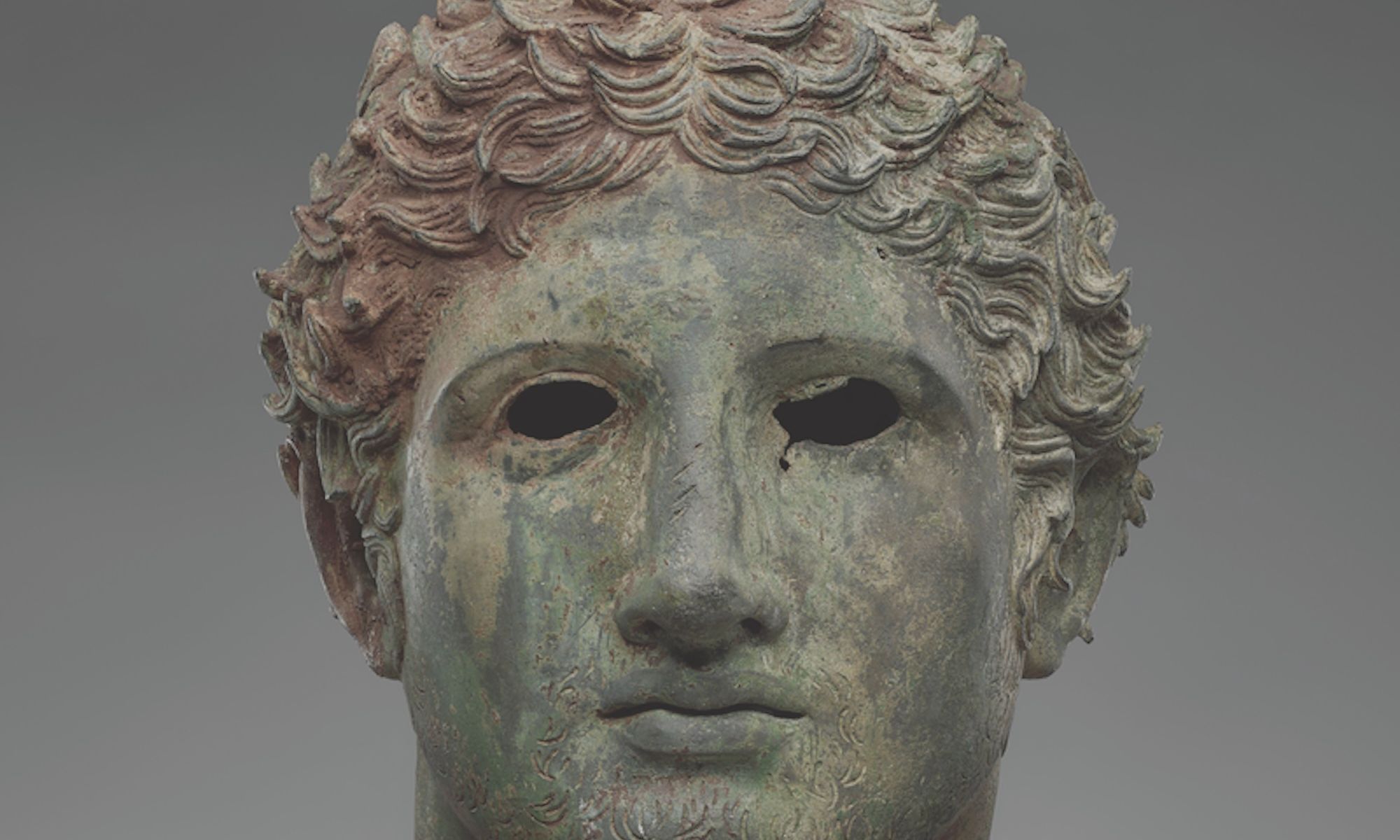Head from a Statue of a Youth (1st century BC–1st century AD) Courtesy the J. Paul Getty Museum
Los Angeles’s J. Paul Getty Museum will return an ancient bronze sculpture of a young man’s head to Turkey after an investigation by the Manhattan District Attorney’s Office revealed that it had been looted in the 1960s.
Head From a Statue of a Youth (1st century BC-1st century AD), a bronze head with curly hair and light stubble on the chin, is believed to have been created as a separate cast from the rest of a now-lost life-size body that has never been identified. Researchers know the figure was once whole, because the neck has “evidence of ancient joins on the interior along the break”, according to a press release, and the eyes—now mere holes in the metal—were “once inlaid with an unknown material”.
The head has been in the Getty Villa Museum’s antiquities collection since 1971, when it was sold to the museum by the late Geneva-based dealer Nicolas Koutoulakis (1910-96), whose name has been associated with a number of antiquities from the region found to have been looted and recently returned. (According to the Getty’s website, the museum still owns more than 150 works previously owned by Koutoulakis.) The head came from the Bubon archaeological site in southwestern Turkey, which was illicitly excavated in the 1960s and the source of a number of bronzes recently flagged for restitution—including a headless statue believed to portray Marcus Aurelius that the Cleveland Museum of Art is fighting to retain.
Although the Getty credits new information from the Antiquities Trafficking Unit at the Manhattan DA’s office with providing proof of the unlawful origin of the head, the sculpture has been the subject of a Turkish repatriation request for more than a decade, according to a 2012 post on the journalist Jason Felch’s Chasing Aphrodite website. Felch notes that the piece was purchased for $90,000 in 1971 (almost $700,000 today), and he identifies three other allegedly looted Ancient Greek and Roman bronzes acquired from Koutoulakis that today remain in the Getty’s collection.
Timothy Potts, the Getty’s director, said in a statement: “We seek to continue building a constructive relationship with the Turkish Ministry of Culture and with our archaeological, conservation, curatorial and other scholarly colleagues working in Turkey, with whom we share a mission to advance the preservation of ancient cultural heritage.”
It has been a busy month for the Getty. Earlier this week, the museum announced its acquisition of a Bartolomeo Manfredi painting previously attributed to Caravaggio. Several days earlier, the Getty publicised the addition to its collection of the first Sophie Frémiet painting acquired by any US museum.

